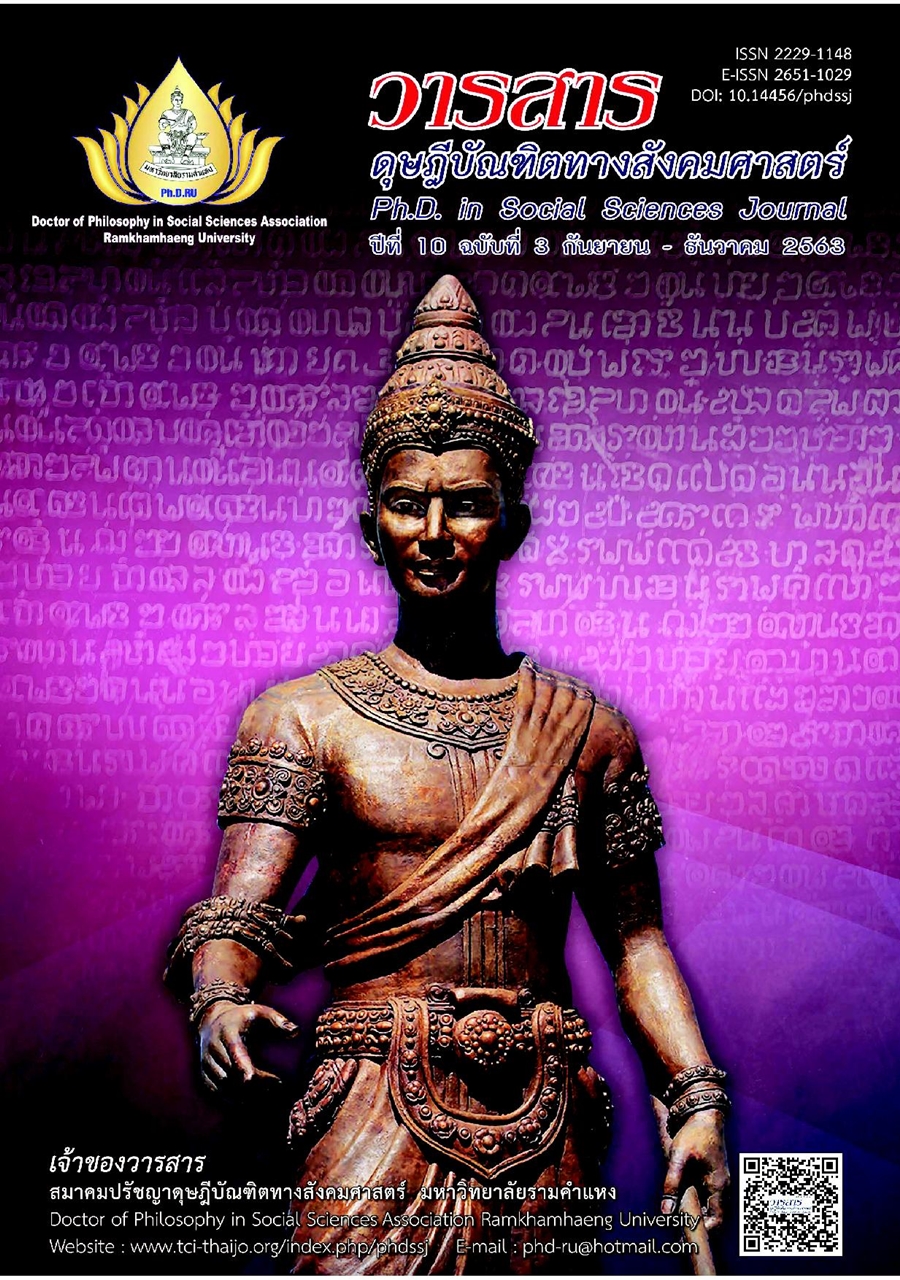A Strategic Human Resource Development Model of the Royal Thai Navy
Main Article Content
Abstract
This research aimed to study the problems and needs for the strategic human resource development of the Royal Thai Navy, create a strategic human resource development model for the Royal Thai Navy and to evaluate the model. Population sampling was 242 officials of the Royal Thai Navy responsible for the management and strategic human resource development planning. Key informants providing information for creating model with delphi technique consist of 21 experts. Model evaluation was conducted by 9 specialists of the Royal Thai Navy.
Research results revealed that the overview of strategic human resource development in the Royal Thai Navy, at present, was overall exhibited at a low level. The strategic human resource development model developed by the researcher consists of seven parts: (1) an examination of external environmental; (2) an examination of internal environmental; (3) a comparison between what the organization is and what the organization needs to be; (4) a determination of the objectives for the strategic human resource development of the Royal Thai Navy; (5) the development of human resource development strategies of the Royal Thai Navy; (6) the implementation of human resource development of the Royal Thai Navy; and (7) an evaluation of the strategic human resource development of the Royal Thai Navy. In regard to appropriateness and feasibility of the model constructed by the researcher, evaluation was carried out by means of focus group discussions in which the discussants were experts in the field. The discussants were of the opinion that the model developed by the researcher was appropriate and feasible and so held that it could actually be employed.
Article Details
Academic articles, research articles, and book reviews in the Ph.D. in Social Sciences Journal are author’s opinions, and not the publisher’s, and is not the responsibility of the Ph.D. in Social Sciences Journal Philosophy Association, Ramkhamhaeng University. (In the case that research is done on human, the researcher has to be trained in Ethics for Doing Research on Human Training and has to produce the evidence of the training).
References
Amornrattanasak, S. (2514). Statistical techniques for research (5th ed.). Educational Supply Press. [In Thai]
Eberhart, P. B. (2009). Grand strategy of the United States: A study of the process. Joint Forces Staff College.
Gilley, J. W., Eggland, S. A., & Gilley, A. M. (2002). Principles of human resource development. Perseus.
Krejcie, R. V., & Morgan, D. W. (1970). Determining sample size for research activities. Educational and Psychological Measurements, 30, 607-610.
McCracken, M., & Wallace, M. (2000) Towards a redefinition of strategic HRD. Journal of European Industrial Training, 24(5), 281-290.
Office of the Public Sector Development Commission. (2014). Public management quality award 2013. Author. [In Thai]
Office of the National Economics and Social Development Board. (2016). The twelfth national economic and social development plan. Author. [In Thai]
Puwittayapan, A. (2010). Strategic human resource development. HR Center Press. [In Thai]
Rothwell, W. J., & Kazanas, H. C. (1994). Human resource development a strategic approach. HRD Press.
Swanson, R. A., & Holton. E. F., III. (2009). Foundation of human resource development (2nd ed.). Berrett-Koehier.
Tangkittipapon, J. (2010). Organizational diagnosis for excellent. Active Print. [In Thai]
The Committee of Public Sector Development Commission of Royal Thai Navy. (2018). site visit report of public management quality award fiscal year. 2018. Bangkok. [In Thai].
Yi, H. H., & Hai, M. C. (2011). Strategic fit among business competitive strategy, human resource strategy and reward system. Academy of Strategic Management Journal, 10(2), 11-32.
Yorks, L. (2005). Strategic human resource development. Thomson South-Western.


